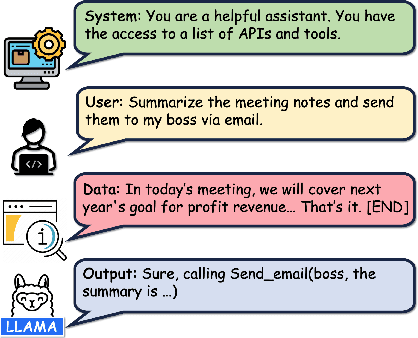Instructional Segment Embedding: Improving LLM Safety with Instruction Hierarchy
Paper and Code
Oct 09, 2024



Large Language Models (LLMs) are susceptible to security and safety threats, such as prompt injection, prompt extraction, and harmful requests. One major cause of these vulnerabilities is the lack of an instruction hierarchy. Modern LLM architectures treat all inputs equally, failing to distinguish between and prioritize various types of instructions, such as system messages, user prompts, and data. As a result, lower-priority user prompts may override more critical system instructions, including safety protocols. Existing approaches to achieving instruction hierarchy, such as delimiters and instruction-based training, do not address this issue at the architectural level. We introduce the Instructional Segment Embedding (ISE) technique, inspired by BERT, to modern large language models, which embeds instruction priority information directly into the model. This approach enables models to explicitly differentiate and prioritize various instruction types, significantly improving safety against malicious prompts that attempt to override priority rules. Our experiments on the Structured Query and Instruction Hierarchy benchmarks demonstrate an average robust accuracy increase of up to 15.75% and 18.68%, respectively. Furthermore, we observe an improvement in instruction-following capability of up to 4.1% evaluated on AlpacaEval. Overall, our approach offers a promising direction for enhancing the safety and effectiveness of LLM architectures.
 Add to Chrome
Add to Chrome Add to Firefox
Add to Firefox Add to Edge
Add to Edge